The Outland Review, vol. 2
Andreas Gysin and Sidi Vanetti's numerical art, the collaborative generative art project "N=12," Takakura Kazuki's AI installation, and Mark Fingerhut's malware ride reviewed in brief
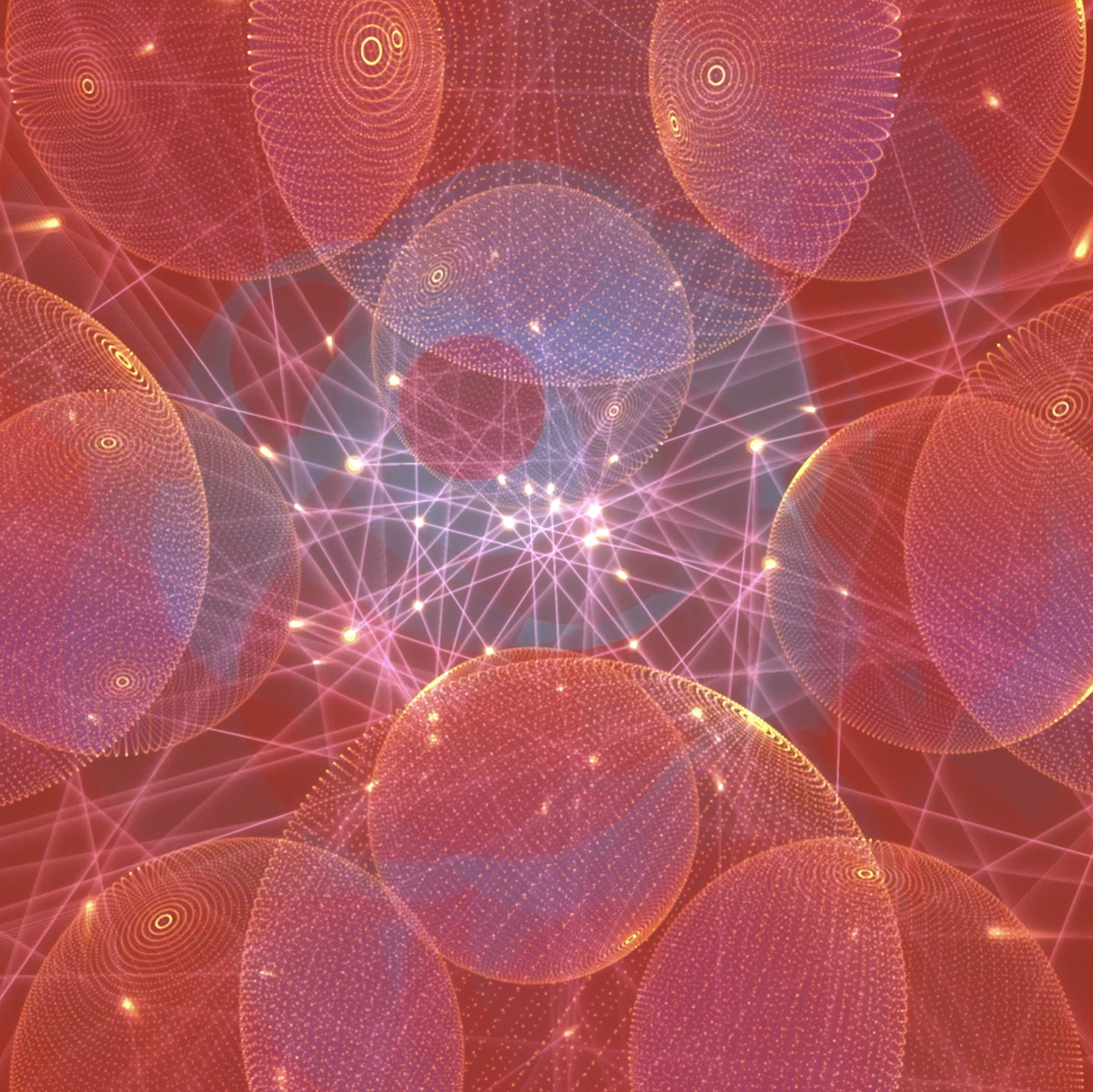
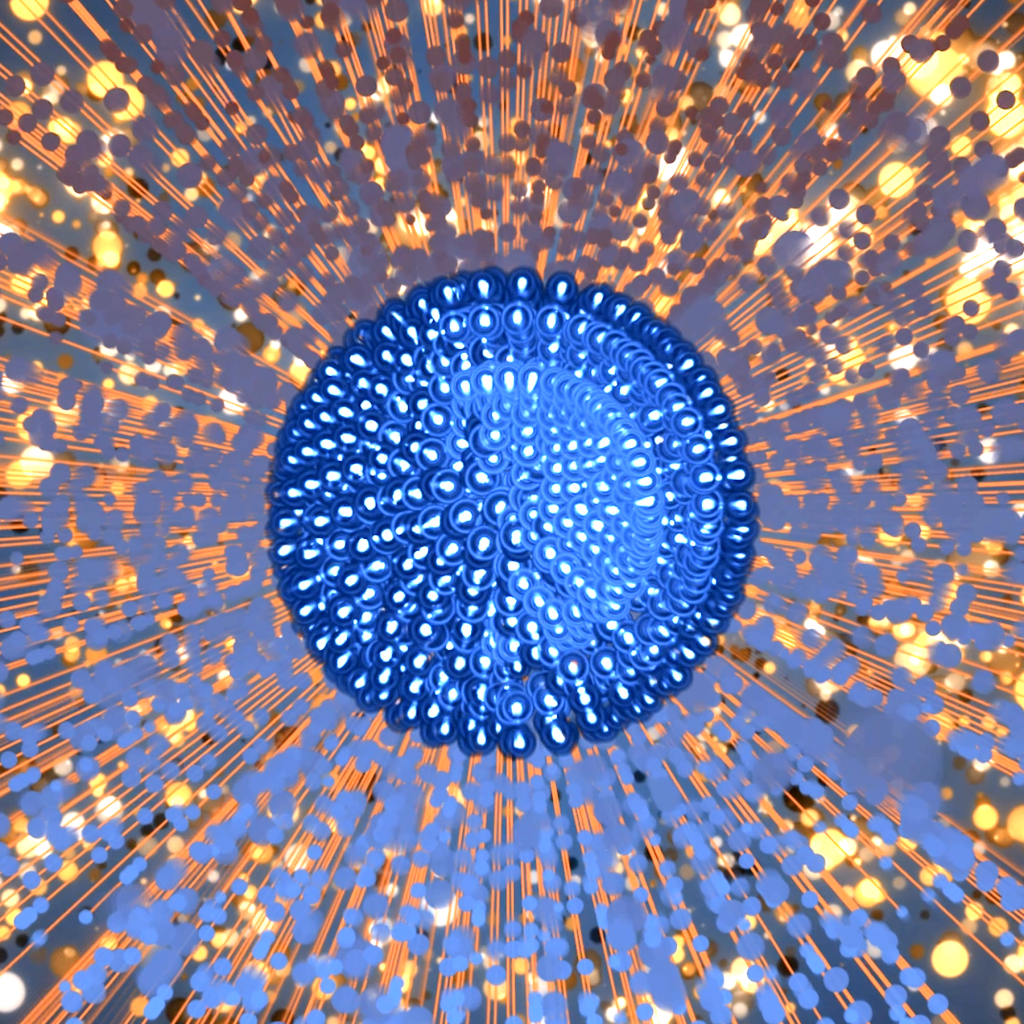
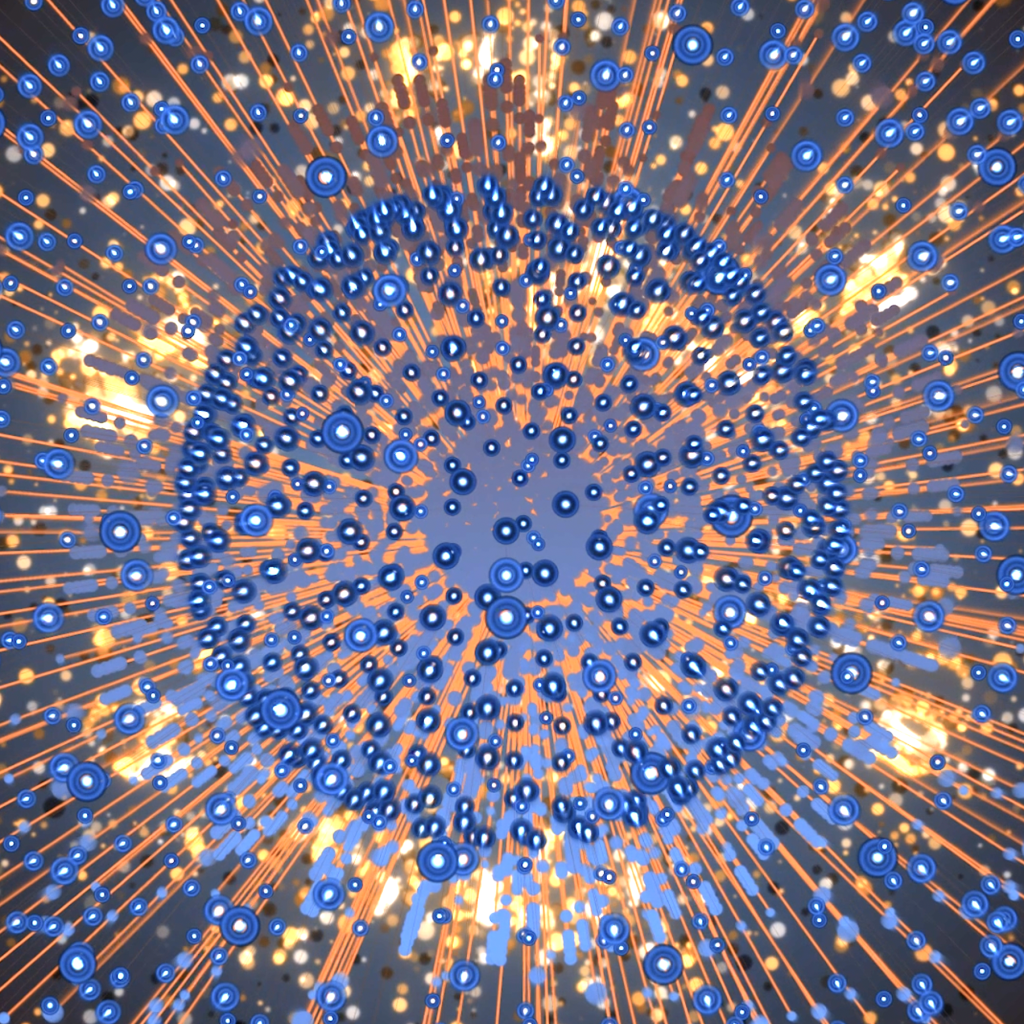
In 1977, Charles and Ray Eames made a short film, Powers of Ten, in which they zoom out beyond our galaxy and then back to Earth, to a park where two people are having a picnic, and then into one of their bodies, down to the atoms. The scale of the film shifts by a power of ten every ten seconds. The images of both outer and inner spaces are equally kaleidoscopic—and their juxtaposition generates a mix of existential fear and solace.
That film came out in the context of the space race and its attendant fever. It followed other works of visual art that had arguably begun to change humanity’s understanding of Earth’s fragility—like Earthrise, a photograph taken on the Apollo 8 mission in 1968, which depicts our planet as seen from lunar orbit for the first time. This was perhaps a time of a more naive or hopeful collective relationship with the cosmos—which lasted through the “pale blue dot” romanticism instigated by the astronomer Carl Sagan two decades later.
Cosmic Bloom is appropriate to a time when the commingling of physical and virtual existences has given us a new, perhaps distorted sense of space and distance.
We are now in the age of space clutter, grotesque billionaire rocket contests, falling satellite junk, and black hole memes. On the opposite end of the scale spectrum, we are all experts in the shape of a virus. In this context, Leo Villareal’s Cosmic Bloom (2022) takes to the digital realm to re-create that fascination with phenomena too large or too small for our human senses to comprehend. Compared to the Eames’ more straightforward representations of the extremities of scale, Cosmic Bloom is weirder, wilder, and more unnerving—as seems appropriate to a time when the commingling of physical and virtual existences has given us a new, perhaps distorted sense of space and distance.
The ever-shifting imagery of Cosmic Bloom, commissioned by Outland,does not show photographs of the very distant or the very near. Instead, it invites us to watch something that feels familiar yet has never before been seen. Each sequence is new and self-propagating, based on code the artist has written with a team of developers. Much like representations of submarine organisms, molecular geometry, or star clusters, these works can have a hypnotic effect, inducing awe at the overwhelming complexity of the universe or a single cell, especially as the viewer cannot be sure what kind of scale they might be looking at.
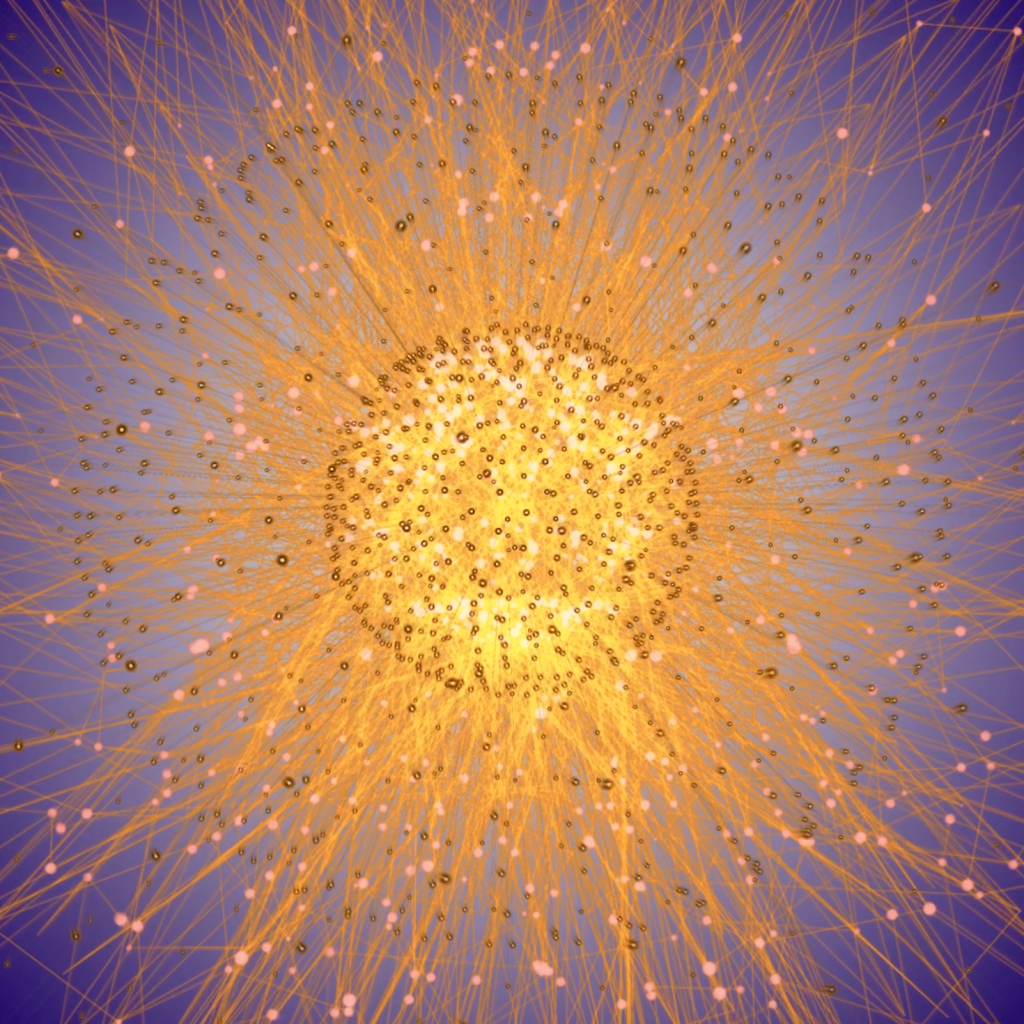
Cosmic Bloom is the second installment of “Cosmologies,” a series that began with Cosmic Reef, Villareal’s first generative NFT project, released on Art Blocks in January. The visual vocabulary in that project was also inspired by atomic, floral, stellar, fractal, synaptic, and planetary forms. In Cosmic Bloom,Villareal is working with a greater complexity of layers and volumes. Due to the minting process of Art Blocks, neither the artist nor the collector knew exactly what an output of Cosmic Reef would look like until it was purchased. With Cosmic Bloom Villareal is exerting more authorial control, selecting the 1,300 works in the series from the outputs he has generated.
Villareal’s process starts with stripped-down, simple forms—fundamental geometric shapes. He then distorts, manipulates, and layers these elements, pushing and pulling them. Feedback loops are key: he experiments with the values of the parameters of the code to achieve a desired effect, and feeds his selections back into the software, repeating and refining until he arrives at the finished code. His method is an interplay between intentional sculpting and a surrender to randomness. Both the objects and the virtual camera are in a constant state of motion: Cosmic Bloom is created and experienced through the passing of time.
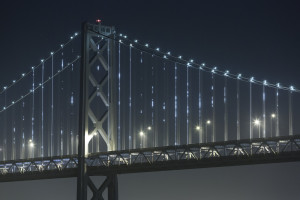
Villareal’s work along the Z-axis gives viewers the sensation of entering a world, rather than watching an image. These generative sculptures feel inextricably but mysteriously linked to our existence at the intersection of the physical and the virtual, the fictional and the real. As Villareal told Charlotte Kent in her catalogue essay for his exhibition of Cosmic Reef at Art Blocks in Marfa this past spring, his work emphasizes the inherent unpredictability of both real world and game world realities. This produces a very different kind of experience from our usual and constant encounters with screens, especially as it counters the repetitive, mindless, and emptily overstimulating kinds of experiences we tend to get from and in those screens.
The monumental works Villareal is best known for demonstrate this encounter between the natural and the computational on a grand scale. The Bay Lights (2013) illuminates the bridge connecting San Francisco and Oakland with an abstract pattern inspired by the reflections of the moon and the city lights in the fog and the bay. For Illuminated River (2019/2021), Villareal created undulating light installations under the bridges across the Thames in London, giving a sense of unity, connection, and safety to the whole river and, by extension, city. He incorporated social and environmental concerns into the work, too. The location of the installations was designed to limit light pollution, and he spent time talking to locals along the bank to understand the river’s significance to them.
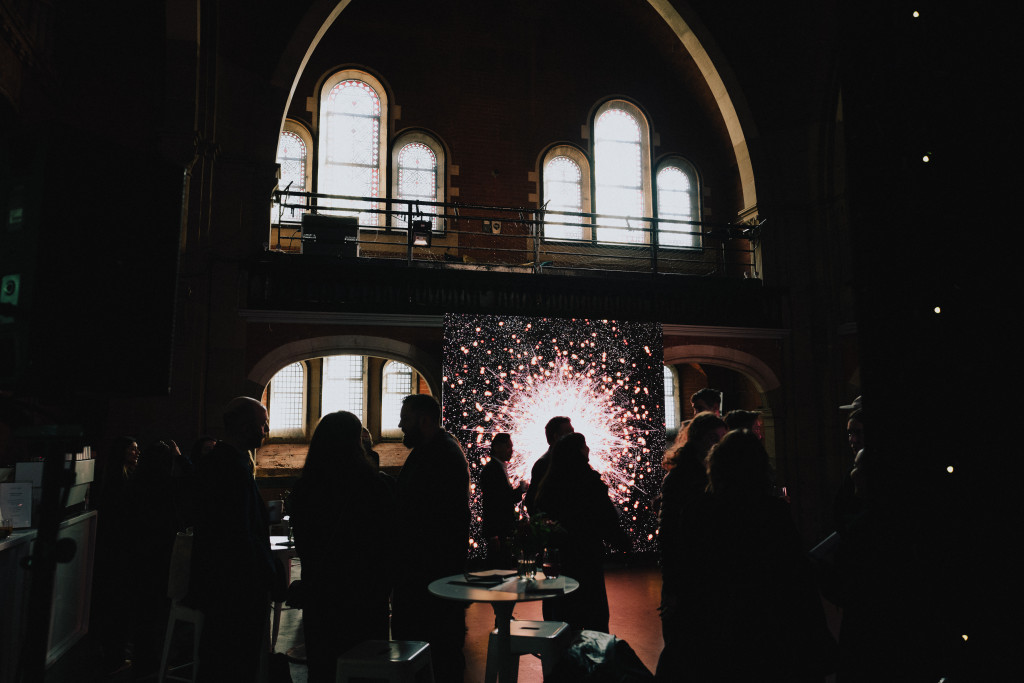
Villareal considers himself a sculptor first and foremost, defining the core of his practice as a “visual manifestation of code in light.” With “Cosmologies,” the computer screen is the field where he explores the possibilities of light. He’s continuing three decades of work with 3D graphics with a new set of tools and attendant constraints, using Three.js to generate shapes and movements in the browser. NFTs offer an opportunity for liberation from the physical aspects of the work, for a move toward a different kind of public sculpture: one that is realized on phones, computers, and other personal devices rather than in urban space.
NFTs move toward a different kind of public sculpture: one that is realized on personal devices rather than in urban space
But screens are variable. Though Cosmic Bloom is designed to be seen in the browser on a personal device, it can scale up, too.In October, sample outputs from Cosmic Bloom were presented at Stone Nest, a spectacularly solemn deconsecrated Welsh chapel from the nineteenth century hidden in the heart of London’ West End, almost like a dungeon that opens up to a cathedral. The setting felt appropriate for Villareal’s hypnotic iterations, which shone on three big screens on the chapel floor, while the sacred geometries of its arches and dome were lowly lit in red. The church was abandoned for several years, then became a nightclub in the 1980s before being converted to a pub, then a squat—a lived-in history that was palpable on this night, with a certain haunted energy that Villareal’s captivating imagery seemed to magnetize. The shapes of Cosmic Bloom reverberated throughout the whole space and rendered it oneiric, illuminating even the crowd themselves, as if inviting them to wonder, to ride together in a dream through outer—or inner—space.
Marta Bausells is a writer, editor, and multidisciplinary artist based in London. She is working on a creative non-fiction book, Not My Story to Tell, that deals with intergenerational trauma around the Spanish Civil War and art’s role in healing.
